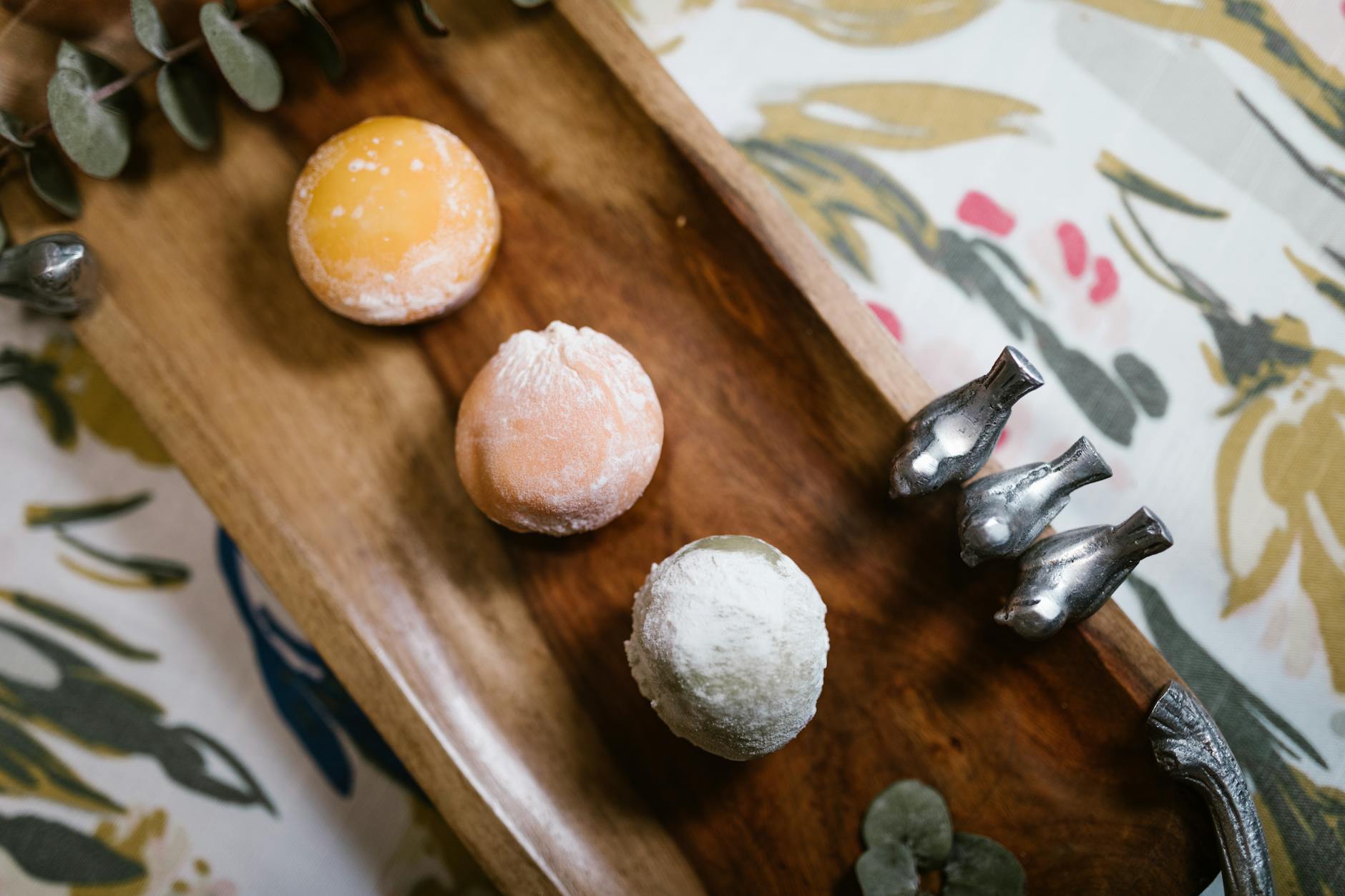Mochi
Delicious Japanese cakes

MOCHI (Japanese: 餅, もち) is Japanese rice cake made of mochigome, a short-grain japonica glutinous rice, and sometimes other ingredients such as water, sugar, and cornstarch. The rice is pounded into paste and molded into the desired shape. In Japan it is traditionally made in a ceremony called mochitsuki. While also eaten year-round, mochi is a traditional food for the Japanese New Year and is commonly sold and eaten during that time.
Origins of mochis
The process of steaming glutinous rice and making it into a paste is
considered to have its origin in ancient China, but this process is
considered to have been introduced to Japan from Southeast Asia some
time after rice cultivation was introduced to Japan at the end of the
Jomon period. Red rice was the original variation used in the production
of mochi.
Since the Japanese have a peculiar fixation on the stickiness of mochi
in particular, they have developed their peculiar mochi culture while
having elements in common with similar foods in other Asian countries.
According to archaeological research, it is considered that the
opportunity to make mochi increased since the sixth century in the Kofun
period, when earthenware steamers became popular in every household
mainly in eastern Japan.
How are mochis made?
Mochi is relatively simple to make, as only a few ingredients are needed
for plain, natural mochi. The main ingredient is either Shiratamako or
Mochiko, Japanese sweet glutinous rice flours. Both Shiratamako and
Mochiko are made from mochigome, a type of Japanese glutinous
short-grain rice. The difference between Shiratamako and Mochiko comes
from texture and processing methods. Shiratamako flour has been more
refined and is a finer flour with a smoother, more elastic feel. Mochiko
is less refined and has a doughier texture.
Other ingredients may include water, sugar, and cornstarch (to prevent
sticking). Additional other ingredients can be added to create different
variations/flavors.
Source: Wikipedia